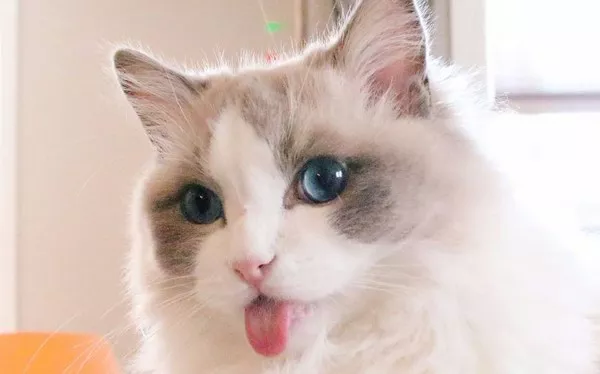Cats, with their meticulous self-grooming habits, often give the impression of being low-maintenance pets. While it’s true that cats are adept groomers, assuming they require no additional grooming from their human companions can lead to a myriad of issues. In this article, we will delve into the consequences of neglecting cat grooming, shedding light on the importance of regular care for the well-being of our feline friends.
The Myth of Self-Sufficiency:
Cats are known for their fastidious grooming routines, spending a significant portion of their waking hours licking their fur to keep it clean and free of parasites. This inherent self-sufficiency might lead cat owners to believe that grooming is a task best left to the feline. However, there are crucial aspects of grooming that extend beyond a cat’s natural instincts and require human intervention.
Consequences of Neglecting Cat Grooming:
1. Matting and Tangled Fur:
One of the most immediate consequences of neglecting cat grooming is the formation of mats and tangles in the fur. Cats, especially those with long hair, are prone to developing mats when loose fur becomes entangled. Mats not only cause discomfort but can also lead to skin irritation and, if left unaddressed, may require professional intervention for removal.
2. Hairballs:
Regular grooming helps in the removal of loose fur, reducing the likelihood of hairballs. When cats groom themselves, they ingest a significant amount of fur. Without proper grooming, the accumulated fur in the stomach can lead to the formation of hairballs, causing digestive issues and discomfort for the cat.
3. Skin Infections and Irritations:
Neglected grooming can result in the accumulation of dirt, debris, and dead skin cells on the cat’s skin. This buildup creates an environment conducive to bacterial or fungal infections. Cats with dense or long fur are particularly susceptible to skin irritations when grooming is insufficient.
4. Parasite Infestations:
Grooming is a vital aspect of parasite prevention. Fleas, ticks, and other external parasites often hide in the fur, and regular grooming helps detect and address infestations early. Neglecting grooming can allow parasites to proliferate, leading to discomfort and potential health issues for the cat.
5. Overgrown Claws:
Cats use scratching to keep their claws in check, but regular nail trims are essential to prevent overgrowth. Cats that are not groomed may experience overgrown claws, leading to discomfort, difficulty walking, and an increased risk of injury to both the cat and its human companions.
6. Dental Problems:
While grooming primarily focuses on fur and nails, neglecting a cat’s dental hygiene can have severe consequences. Dental issues, such as tartar buildup and periodontal disease, can arise without regular attention. Poor oral health not only affects the cat’s ability to eat comfortably but can also contribute to systemic health problems.
7. Behavioral Changes:
Cats that are not groomed may exhibit changes in behavior. Discomfort caused by matting, tangles, or other grooming-related issues can lead to increased irritability, aggression, or withdrawal. Regular grooming helps maintain a positive and comfortable relationship between the cat and its owner.
8. Weight and Mobility Issues:
Overweight or elderly cats may struggle with self-grooming, and neglecting grooming in these cases can exacerbate the challenges they face. Cats with mobility issues may find it difficult to reach certain areas for grooming, making human assistance crucial for their overall well-being.
The Importance of Human Involvement:
While cats are proficient groomers, human involvement is essential for addressing grooming needs that extend beyond the cat’s natural abilities. Here are some key aspects of grooming that require human attention:
Brushing and Detangling:
Regular brushing is particularly important for cats with long or dense fur. It helps prevent matting, reduces shedding, and promotes a healthy coat. Brushing also allows owners to check for skin abnormalities, parasites, or lumps that may require veterinary attention.
Nail Trimming:
Cats need regular nail trims to prevent overgrown claws. Owners should use cat-specific nail clippers and be cautious not to cut into the quick, which can cause pain and bleeding. If unsure, seeking guidance from a veterinarian or professional groomer is advisable.
Ear Cleaning:
Cats with floppy ears or those prone to earwax buildup may benefit from regular ear cleaning. Using a cat-safe ear cleaning solution and cotton balls, owners can gently clean the visible parts of the ears. Deeper ear issues should be addressed by a veterinarian.
Dental Care:
Dental care is a crucial but often overlooked aspect of cat grooming. Regular tooth brushing with a feline toothbrush and toothpaste is the most effective way to maintain oral health. Dental treats and toys designed to promote oral hygiene can also be beneficial.
Checking Eyes and Nose:
Cats may develop discharge around the eyes or nose, especially in breeds with flat faces. Wiping away any discharge with a damp cloth and monitoring for signs of respiratory issues is part of routine grooming. Excessive discharge or persistent issues should be evaluated by a veterinarian.
Bathing:
While many cats groom themselves effectively, some may benefit from occasional baths, especially if they have skin conditions, allergies, or have come into contact with toxic substances. Bathing should be approached with caution, using cat-friendly shampoos and ensuring a calm environment.
Establishing a Grooming Routine:
To prevent the consequences of neglecting cat grooming, it’s essential to establish a grooming routine that suits both the cat and the owner. Here are some tips for creating a positive grooming experience:
Start Early:
Introduce grooming to kittens early to acclimate them to the process. Positive experiences during kittenhood make grooming more comfortable for the cat as it grows older.
Use Positive Reinforcement:
Rewarding the cat with treats, praise, or playtime after grooming sessions creates a positive association. This reinforcement encourages cooperation during future grooming.
Be Gentle and Patient:
Approach grooming with gentleness and patience. Cats may be sensitive to certain areas being touched, so take the time to build trust and proceed at the cat’s pace.
Gradual Introduction:
If a cat is not accustomed to grooming, introduce it gradually. Start with short sessions, focusing on one area at a time. Gradually increase the duration as the cat becomes more comfortable.
Choose the Right Tools:
Use grooming tools designed for cats, including brushes, combs, and nail clippers. Opt for tools that suit the cat’s coat type and length to ensure effective grooming.
Monitor Changes:
Regular grooming provides an opportunity to monitor the cat’s overall health. Look for changes in the skin, fur, eyes, and behavior, and consult a veterinarian if any concerns arise.
Conclusion:
Neglecting cat grooming can have far-reaching consequences that impact not only the cat’s physical health but also its overall well-being and the quality of the relationship with its owner. Regular grooming, coupled with attentive observation and care, is an integral part of responsible cat ownership. By understanding the unique grooming needs of individual cats and addressing them with compassion and commitment, owners can ensure that their feline companions lead happy, healthy, and comfortable lives.

























